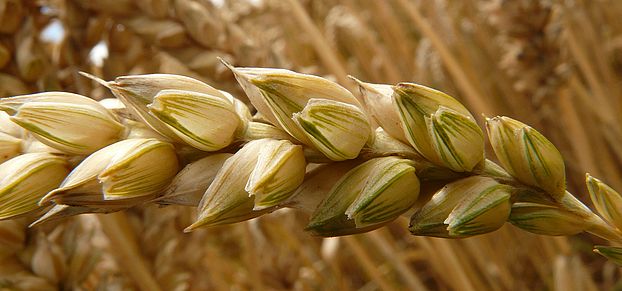The wheat genome is five times bigger than the human genome

Scientists at the University of Zurich, together with international research partners, have finalized the sequencing of the complete genome of common wheat. It is the result of a 13-year international collaboration by the International Wheat Genome Sequencing Consortium (IWSCG). The sequencing information will enable more effective measures to be taken to combat pests and climate stress in wheat.
Five times bigger than the human genome
The genome of wheat consists of over 15 billion base pairs, making it around five times larger than the human genome. The wheat genome is divided into 21 chromosomes and has a triple set of chromosomes – in total almost 100,000 genes. The genome was decoded by sequencing the order of the base pairs in the chromosomes. “Sequencing the wheat genome is a scientific and technological milestone. Never before has such a large genome been sequenced with such high quality,” says Prof. Beat Keller of the Department of Plant and Microbial Biology of the University of Zurich and coordinator of the project within the consortium.
A particular difficulty for the sequencing was the extremely high number of transposable elements, or transposons. These short sections of DNA are present with thousands of copies. Transposons are insignificant for the survival of wheat, but made it very difficult until now to correctly compose the sequence of the complete genome. “Thanks to great advances in sequencing technology and above all in bioinformatics, it has now become possible to compose practically complete chromosome sequences of wheat,” explains Dr. Thomas Wicker, head of a research group in bioinformatics and responsible for analyzing the transposons.
Reference publication
International Wheat Genome Sequencing Consortium (IWGSC). Shifting the limits in wheat research and breeding through a fully annotated and anchored reference genome squence. Science, 16. August 2018. DOI: 10.1126/science.aar7191
Further links
http://www.wheatgenome.org
IWGSC Explainer video on Youtube
